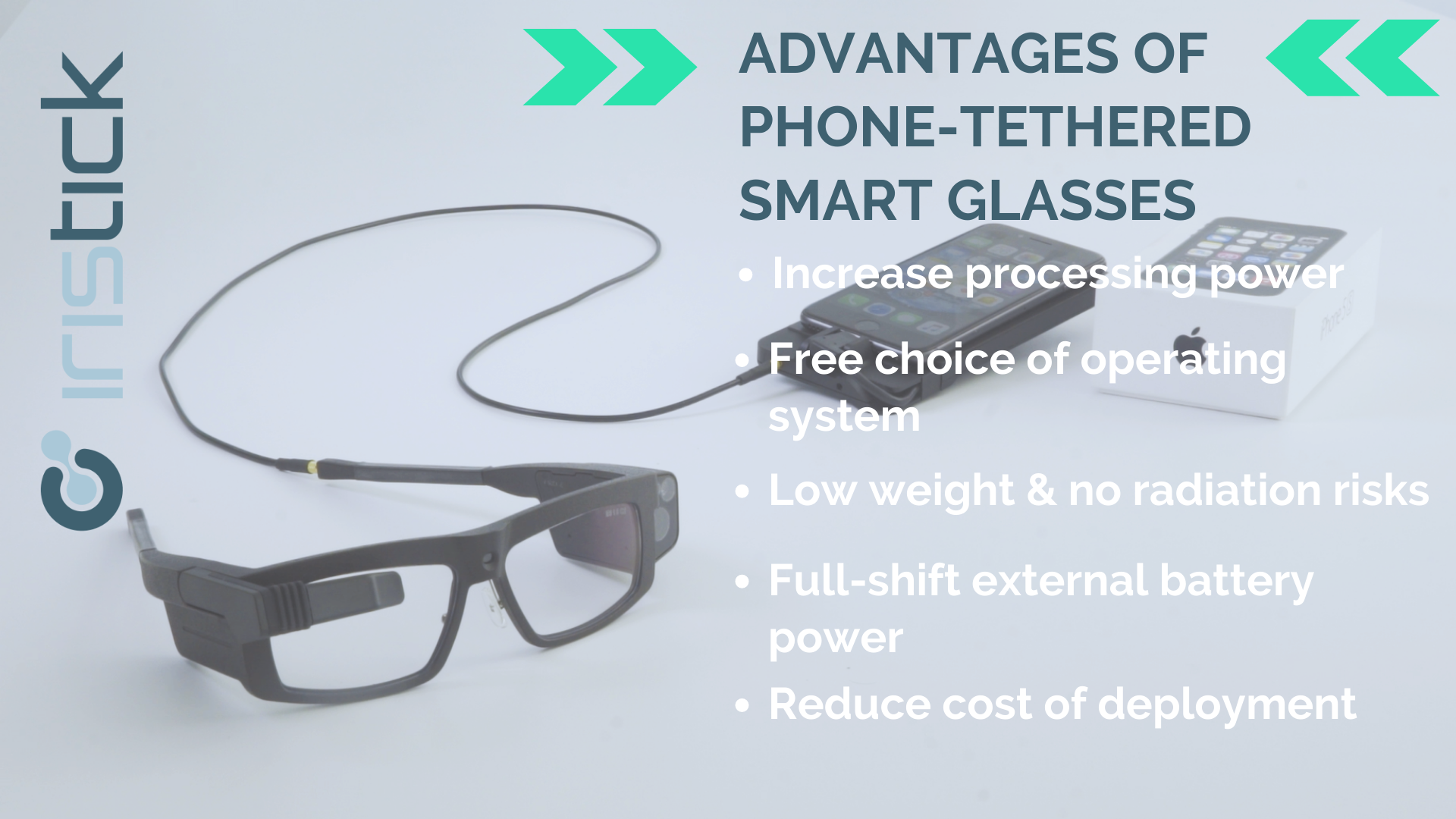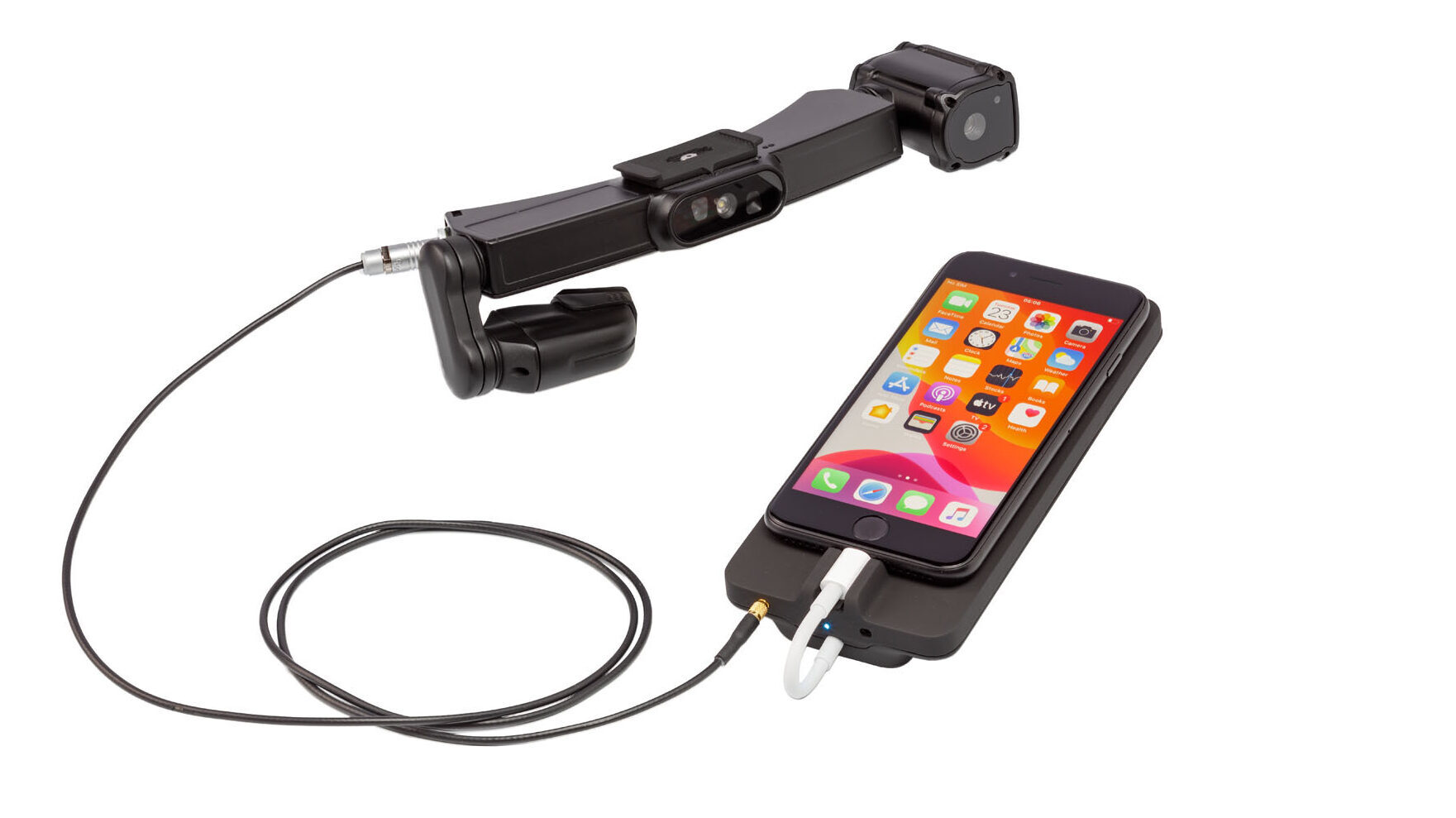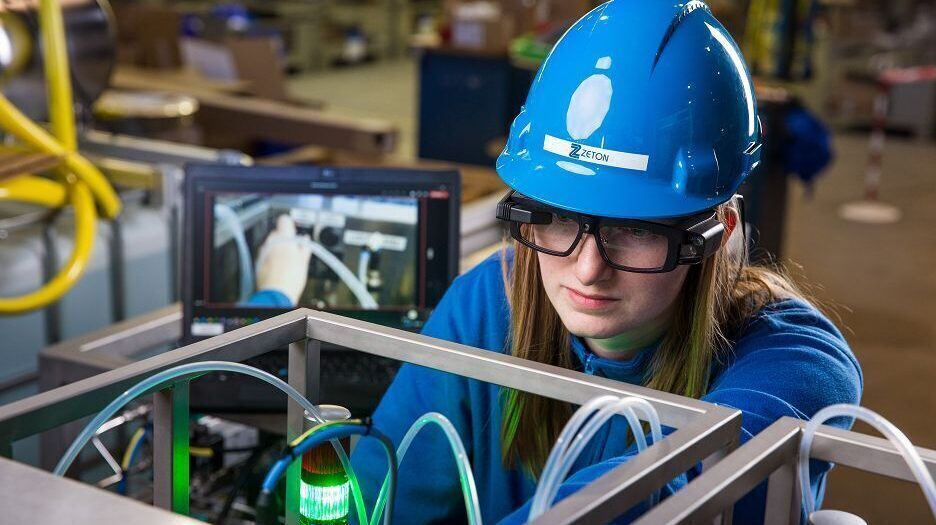There’s no doubt that enterprise smart glasses have become more widespread since the Covid-19 pandemic with numerous organizations already deploying smart devices in their daily operations. From health care settings to industrial environments, troubleshooting and resolving issues from a distance has taken the stage in various industries. The adoption of smart glasses is therefore expected to grow even more so in the coming months. As the demand for smart wearables rises, so does the supply, leaving decision-makers with critical factors to take into consideration when choosing the right device for their operators.
Generally speaking, smart glasses fall under two categories, with their traditional origin being all-in-one devices with batteries encapsulated into the device itself. Their counterparts, known as devices where battery and device are completely disconnected, prompt an external source as the main provider of (processing) power, known as phone-tethered smart glasses.
The latter is designed with the wearer as a starting point, unlocking optimal worker safety standards and maximizing user comfort. Read what other advantages phone-tethered smart glasses bring along.

Increase processing power
Empowering frontline workers with smart glasses means ensuring they can smoothly collaborate remotely in real-time and provide instant remote assistance when needed. As hardware and software work in tandem, smart glasses devices rely on various applications and while the more applications and functionalities a device requires, the more processing power it needs. As phone-tethered smart glasses pull their processing power out of central processing units (CPU’s) of their connected smartphones, it goes without saying that this architecture generates more processing power than all-in-one smart glasses. In fact, a modern smartphone has a far better CPU than any all-in-one smart glasses. Also, the simple fact that a smartphone contains more room for a CPU than in built-in smart device systems leads to an increase in processing power for phone-tethered devices.
2. Free choice of operating system and smartphone
When choosing an operating system, traditional smart glasses technology offers no command as all functionalities are encapsulated in the device itself. Since all functionalities are built into the device, you are heavily dependent on the supplier of the smart glasses. By working with a smartphone you have much more freedom regarding applications and functionalities that are important for your use case.
By working with phone-tethered smart glasses, companies have all freedom to choose their smartphone brand, model, and operating system of preference. Whether an iOS or Android infrastructure, the type of smartphone does not hinder the implementation of the glasses thanks to the disconnection. This also ensures the smart glasses don’t easily get obsolete. Upgrades on the smartphone automatically result in the smart glasses being updated, which only benefits the smart glasses’ performance in the long term. Another major advantage is that smartphones are already part of the secured IT infrastructure of any professional organization. Phone-tethered smart glasses therefore can be introduced much faster in the IT-security standards of large corporations.

3. Low weight and no radiation risks
Decoupling the battery and processing power source from the smart glasses also results in the most lightweight and balanced option of smart head-worn devices, ensuring the most ergonomic smart glasses solution on the market. Wearing smart glasses on a full working shift can be a real burden for frontline workers, especially if the glasses are not comfortable to wear. By detaching the smart glasses from their processing power source, user-comfort, as well as worker safety, is maximized.
In this manner, the smart glasses mimic a regular pair of glasses while the stored-away smartphone generates the processing power for the device to work. Frontline workers can safely work with both hands free with ultimate comfort, avoiding all kinds of heat dissipation and Wifi/Bluetooth radiation near the temple.
4. Full-shift external battery power
Processing data is exhausting for any electronic device. The last thing you want to happen is your pair of smart glasses running low on battery while you’re on an oil rig fixing complex issues. To provide enough battery for a full work-shift, detached architectures offer more battery longevity than traditional all-in-one devices. Even more, detached systems rely on their external battery pack (so called ‘pocket units’) for their respective smart glasses features, such as a working camera, microphone, barcode scanner etc. The processing of the captured data, however, depends on the processing power of the smartphones. This two-fold way of battery supply offers a robust and intelligent way of saving and providing battery life.
The battery of phone-tethered smart glasses is thus reliant on the power-providing pocket unit whereas, with traditional models, the battery must be accommodated in the device itself, substituting on user-comfort and battery power.

5. Reduce cost of deployment
Nowadays, almost every working professional owns a smartphone, making the cost of smartphone purchases for an organization superfluous. Operators can connect their smart glasses with their own personal smartphones without any problem at any time, decreasing the total cost of ownership. It also guarantees investment in a longer-term, since the phone can be replaced by a newer generation, without having to replace the smart glasses they are tethered to. Moreover, as all mobile phones are already connected to a general network in professional contexts, phone-tethered smart glasses can easily integrate with any IT infrastructure.
With a strong emphasis on the wearer, smartphone-powered smart glasses have proven to offer multiple benefits resulting in better worker safety, wearer comfort and battery capacity. These types of smart glasses are specifically designed to safeguard optimal comfort during a full work shift. However, not only do wearers reap benefits of this technology as the advantages on an organizational level mostly lead to lucrative outcomes on a bigger scale and seamless integrations in current IT infrastructures. As an innovative solution at the helm of disrupting industrial operations, it is no wonder that phone-tethered smart glasses are at the leading edge of frontline work.